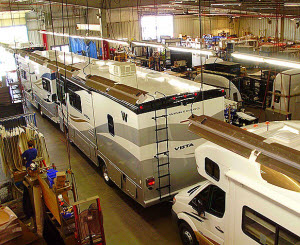Recreational Vehicles (RV) is one of the most popular alternatives for long distance travels as opposed to moving from one hotel to another. Depending with the type of RV you will be using, there are several things you must know when checking for this type of vehicle.
According to the NFPA 1192 for the Standard on Recreational Vehicles, several inspection processes are needed to be evaluated when importing an RV. When Recreational Vehicles are concerned, there are a lot of inspection procedures to be taken. InTouch is the leading quality control company focusing on inspections on RV’s in China. Some of the things we take into account in our inspection and verification process include:
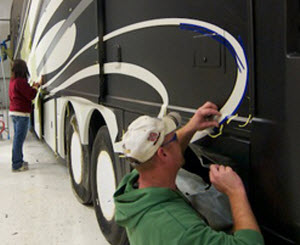
EXTERIOR INSPECTION
Wall Inspection
- Identify and inspect the surface condition of all sides of the Recreational Vehicle.
- Inspect the body for any sign of leaks especially when it comes to structural rust.
- Identify and inspect the Seals and Caulking of the Recreational Vehicle to verify that everything is sealed and reinforced.
- Inspect the Trim of the Recreational Vehicle for cracks, leaks or any potential substance that can damage the RV.
- Inspect the Door(s) and screen(s) and as well as the Window(s) and screen(s) of the Recreational Vehicle for rust, corrosion and hinges.
- Identify and inspect the ventilation of the Recreational Vehicle to ensure proper ventilation inside the RV regardless of its state.
- Inspect each hand rail for rust, corrosion build up or any sign of deterioration found on the hand rails.
- Identify and inspect the Awning mechanisms and Awning canvas of the Recreational Vehicle for any sign of misuse. Ensure that both materials are working optimally.
- Inspect the Awning wind sensor operation of the Recreational Vehicle and its capability to operate by turning the device on and off.
- Inspect the lights, mirrors and steps of the Recreational Vehicle for any defects, rust, chips and breaks to ensure proper operation.
- Inspect the Connector covers and sockets of the Recreational vehicle to ensure that each mechanism is working when towing is needed.
- Inspect the fuel door(s), lock(s) and cap(s) of each Recreational Vehicle to make sure that there are no missing components during inspection and purchase.
- Identify and inspect the slide external seals of all sides of the Recreational Vehicle for damage and corrosion build ups to ensure quality.
- Inspect the slide operation of the Recreational Vehicle on both functions - motorized and manual crank to ensure both mechanisms are working.
- Identify and inspect the slide locking mechanism being used on the Recreational Vehicle to check if it passes different quality control standards for safety.
- Inspect all the slide covers of the Recreational Vehicle for any sign of wear and tear, damage, hinges and creaks to ensure proper operation.
- Inspect all the fold-outs and expansions of the Recreational Vehicle being inspected if the mechanism is working as expected.
- Inspect the roof's surface condition to know if there are other activities needed to be done on the Recreational Vehicle.
- Inspect each corner and edge of the Recreational Vehicle to ensure that there are no leaks, rust buildup and other damaging factors on the wall attachments of the vehicle.
- Inspect thoroughly for any signs of leaks on the Recreational Vehicle's roof to ensure that no leakage will happen after purchase despite of the condition of the vehicle.
- Identify and inspect the vents and vent hoods of each Recreational Vehicle for any sign of leaks and build ups on the roof of the vehicle.
- Identify and inspect the Recreational Vehicle's Skylight(s) for any sign on tear, breakage and/or cracks visible both inside and outside of the vehicle.
- Inspect the slide covers of the Recreational Vehicle to ensure that the mechanism of the cover is working flawlessly.
- Identify and inspect the air conditioners found on the Recreational Vehicle to ensure that the unit does not need Freon replacement and the tubes do not create leaks.
- Inspect the antennas or satellite dishes (if applicable) of the Recreational Vehicle to ensure that it is calibrated correctly and is ready for use.
- Inspect the ladders of the Recreational Vehicle and its condition by checking for rust or corrosion to ensure safe use on a regular basis.
- Inspect the caulking attachment of the Recreational Vehicle to ensure if the equipment is working as expected.
- Identify and Inspect the solar panels (if applicable) of the Recreational Vehicle to ensure if proper alignment and calibration has been made.
Underside Inspection
- Identify and inspect any fluid leaks and its source to ensure the status of the engine and its estimated repairs (if needed).
- Inspect the condition of each frame of the Recreational Vehicle for any signs of damage or repair to ensure stability and value.
- Identify and inspect the welds of machineries from axles, suspensions and brakes of the Recreational Vehicle to estimate the vehicle's reliability.
- Identify and inspect the electric brake wiring of the Recreational Vehicle to ensure that there are no signs of damage or repair to ensure safe and reliable usage of the vehicle.
- Identify and inspect the plumbing mechanism of the Recreational Vehicle to ensure that there are no clogs, leaks or damage found in the plumbing facility.
- Identify and inspect the holding tanks to be used by the Recreational Vehicle for water and waste to ensure that there are no contamination and leaks during operation.
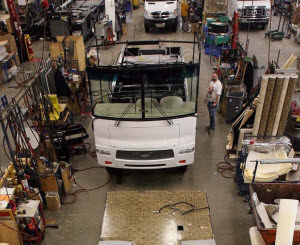
- Identify and inspect the underside enclosure and insulation of the Recreational vehicle to ensure that there are no signs of poorly-insulated areas on the vehicle.
- Identify and inspect the different strap holding pipes, wires and hoses on the underside of the Recreational Vehicle to ensure that there is no damage, leaks or loose parts.
- Identify and inspect the leveling jacks to be used by the Recreational Vehicle to ensure that the mechanism is working as expected and that there are no signs of damage or loose parts.
- Identify and inspect the stabilizing jacks of the Recreational Vehicle to ensure that there are no problems driving the vehicle regardless of the condition.
- Identify and inspect the drive shaft of the Recreational Vehicle to ensure that no complications will occur during short to long distance travels using the vehicle.
- Identify and inspect the rear differential of the Recreational Vehicle to maintain the stability of the vehicle when operating on poorly-constructed roads.
Storage Compartment Inspection
- Inspect the overall condition of the storage compartment of the Recreational Vehicle to ensure that there are no damages or defects when using the storing items.
- Identify and inspect the storage compartments of the Recreational Vehicle for any signs of leaks to ensure a contamination-free storage space.
- Inspect the lower compartments (if applicable) of the Recreational Vehicle for any damages on the floorboard to ensure a convenient storage space.
- Inspect all the visible components found in the storage compartment of the Recreational Vehicle and as well as the doors and seals to ensure that everything is working perfectly.
- Identify and inspect the lighting of the storage compartments of the Recreational Vehicle to ensure that all lights are working and there are no busted components.
- Inspect the sliding tray and locking mechanism of the storage compartment of the Recreational Vehicle to ensure that the compartment is secure.
Wheel Inspection
- Inspect the tire pressures, treads and tire manufacture date of all the tires of the Recreational Vehicle to ensure that proper levels are monitored for a safe and reliable driving.
- Inspect the spare tire of the Recreational Vehicle to ensure that there is a reliable back up for emergencies.
- Inspect the lug nut torque of the Recreational Vehicle to ensure that the mechanism is working properly.
- Inspect the wheel rims of each tire of the Recreational Vehicle for any damage, signs of tear and weak build to ensure the safety and reliability of the rims for short and long distance travels.
- Inspect the brake function, brake pads and the brake rotor surface of the Recreational Vehicle to ensure that the each component and mechanism is working as expected.
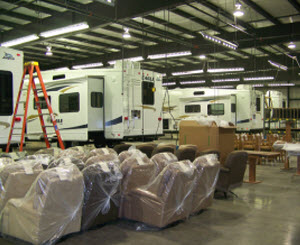
Utility Inspection
- Inspect and identify the power cable and connectors, RV batteries, RV battery disconnect switch and RV battery sliding tray secure of the Recreational Vehicle to ensure that all the proper electrical wirings are working optimally.
- Inspect and identify the cable TV connector (if applicable), telephone connector (if applicable), satellite dish connector (if applicable) for the Recreational Vehicle to ensure that these utilities are working as expected during travel.
- Inspect the fresh water hose and connectors of the Recreational Vehicle to ensure that the water is flowing accordingly regardless of water pumps (if applicable).
- Inspect and identify the outside shower and faucet of the Recreational Vehicle for any leaks and rust build ups to ensure safe and contamination-free usage.
- Inspect the water tank valve of the Recreational Vehicle if it is working accordingly (by filling and draining and checking the levels) to ensure efficient and reliable use.
- Inspect the winterizing connector and valve (if applicable) for the Recreational Vehicle to ensure that there are no frost build ups during travels.
- Inspect the water heater tank drain valve of the Recreational Vehicle to ensure that heated water is stored and no leaks are present whether in use or not in use.
- Inspect the sewer hose and connectors and sewer hose storage tube or compartment of the Recreational Vehicle to ensure that the tubes and hoses are working without any leaks or spills occurring.
Propane Inspection
- Inspect the condition of the propane bottle condition of the Recreational Vehicle to ensure that there are no leaks coming out of the propane tanks for the safety of the vehicle.
- Inspect the propane bottles and sliding tray of the Recreational Vehicle to ensure that there are no signs of damages and creaks occurring during use.
- Inspect and identify if the tanks have OPD valves that has been regulated by quality control standards to ensure that the Recreational Vehicle is safe and ready for use for cooking.
- Inspect the connections, pipes and hoses of the Recreational Vehicle to ensure that no seepages are occurring during use of the propane tanks for different activities.
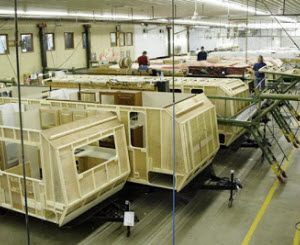
Motor Home Engine Compartment Inspection
- Inspect and identify the different engine oil, engine coolant, power steering fluid, brake fluid, transmission fluid, and windshield washer fluid to be used on the Recreational Vehicle to ensure that each slot are working as expected and ready for use.
- Inspect the different hoses, belts and batteries of the Recreational Vehicle to ensure that there are no visible leaks, damages and problems on the vehicle during use.
- Inspect and check the leaks for both fluid and exhaust of the Recreational Vehicle to ensure that the machinery is working as expected.
- Inspect the wiring, air filter and fuel filter of the Recreational Vehicle to ensure that the devices in need of it are functioning properly.
- Inspect the engine of the Recreational Vehicle to ensure that everything is working optimally when starting on the engine and driving. Check the exhaust color after 5 minutes of idling on the vehicle after using to check the levels.
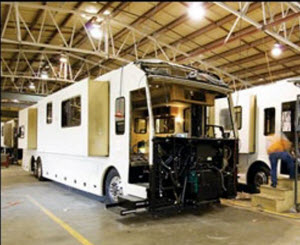
INTERIOR INSPECTION
General Inspection
- Inspect the floor plan of the Recreational Vehicle and the layout to ensure that there are no holes, flooring issues and leaks occurring when inside the vehicle.
- Inspect the walls, internal seals, trim, windows and screens, drapes and shades, door locks and latches, finishes of the Recreational Vehicle if every single component is operating as expected to ensure that the vehicle is more than ready for use.
- Inspect and identify the furniture built in on the Recreational Vehicle to ensure that every detail is working accordingly and is functioning as expected to ensure a convenient use of the vehicle.
- Inspect the ventilations and fans of the Recreational Vehicle to ensure that proper ventilation are air passage is working as expected.
- Inspect all the angles of the room of the Recreational Vehicle to ensure that there are no infestations of rodents, pests or insects lurking inside the vehicle for safety precautions.
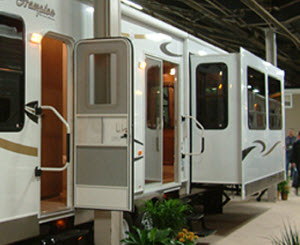
Kitchen Inspection
- Inspect the countertops, countertop extensions and sinks inside the kitchen of the Recreational Vehicle to ensure that there are no leaks and damages visible before launching for use.
- Inspect the seals, caulking around the sink and other sealants being used by the Recreational Vehicle during use to ensure that there are no issues like leaks occurring when in use on a regular basis.
- Inspect and identify the stove top, burners, and igniters, exhaust fan and vent covers to be used by the Recreational Vehicle to ensure that there is no possible danger occurring when using the kitchen stove.
- Inspect the microwave oven (if applicable), coffee maker (if applicable), dish washer (if applicable), refrigerator and air conditioning of the Recreational Vehicle to ensure that all of the appliances are working as expected.
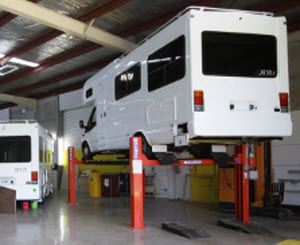
Bathroom Inspection
- Inspect the toilet facilities like the toilet flush, sinks and fixtures, shower tub and walls, shower door and latch, shower skylight (if applicable), dryer vents, and shower fixtures on the Recreational Vehicle to ensure that every detail is working accordingly.
- Inspect for possible leaks around the toilet base, washer hoses, washer and dryer connections on the Recreational Vehicles to ensure that there are no leaks occurring in the vehicle’s shower.
- Inspect the panels around and behind the shower for visible leaks on the bathroom fixings to ensure that there are no seepages happening on the Recreational Vehicle on regular use.
Fresh Water Systems Inspection
- Inspect the faucets, water heater and water pump of the Recreational Vehicle to ensure that all of the components are working accordingly and does not disrupt the energy and propane flow of the vehicle during use.
- Inspect the water pump of the Recreational Vehicle if it automatically shuts off when not in use to ensure the efficiency of the vehicle.
Waste Systems Inspection
- Inspect and identify the different tank level indicators (grey and black tanks) of the Recreational Vehicle to ensure that no leaks and possible contaminations are happening inside the vehicle during use.
- Inspect the drainages of the sinks and shower if all the fluid is flowing accordingly on the drainage of the Recreational Vehicle to ensure minimal damages due to regular use.
- Inspect all the right ventilation inside the Recreational Vehicle to ensure that there are no foul odors lingering inside the vehicle even when not in use.
Electrical Inspections
- Inspect all the lighting to be used on the Recreational Vehicle (120 volt A/C and 12 Volt DC) to ensure that there are no short circuits that may occur during use regardless of the condition.
- Inspect and identify the A/C power outlets and check for power to ensure that the Recreational Vehicle is powering the inside of the vehicle properly.
- Inspect and check if the battery is charging when connected to either the shore power, generator or via the mechanical umbilical cord used for towing to ensure that the Recreational Vehicle can readily get power when needed.


